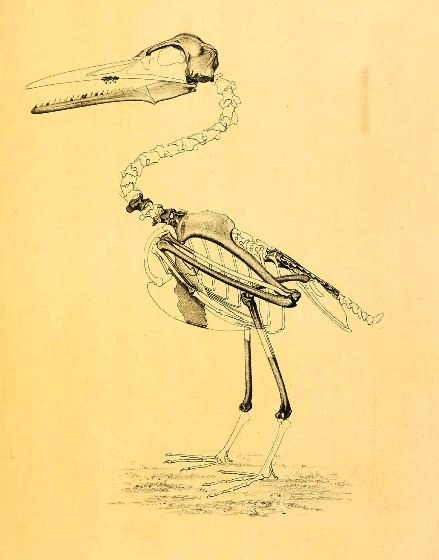The evolutionary transition of certain dinosaurs into modern birds has long been an active area of paleontological research. Because the members of the class Aves are living representatives of theropod dinosaurs, paleontologists have sought fossil evidence to support this evolutionary line of descent. One very critical fossil example is Ichthyornis dispar. This extinct flying bird, which resembled a modern-day seagull, is known exclusively from the latest stages of the Cretaceous (approximately 100–65 million years ago) in North America. The initial discovery of this fossil bird in the 1870s was so notable in providing skeletal evidence of the transitional period between dinosaurs and modern birds that Charles Darwin highlighted the jaw of Ichthyornis as support for the theory of evolution. Now, using the latest fossil finds of this ancient bird in Kansas, along with more precise analyses of fossil specimens previously discovered in the late 1800s, researchers have generated a three-dimensional computer tomography image of this animal's skull, showing that it possessed a beak and other skeletal structures similar to those of modern birds. See also: Animal evolution; Aves; Avian evolution; Computerized tomography; Cretaceous; Cretaceous bird radiation; Dino-Birds; Dinosauria; Evolution of theropod dinosaurs; Extinction; Extinction (paleontology); Ichthyornithiformes; Neornithes; Paleontology

The skull of Ichthyornis displays features of both present-day birds and ancient dinosaurs. Modern birds have no teeth; in contrast, the pincer-like jaw of Ichthyornis had sharp pointed teeth like the jaw of its dinosaur ancestor. Dinosaurs had a fixed upper jaw; however, the upper and lower jaws of Ichthyornis were capable of independent movement, allowing more delicate and dexterous actions, as seen in modern birds. Moreover, the jaw muscles of Ichthyornis were very powerful—more in line with carnivorous dinosaurs. The transition to smaller muscles found in modern birds had not occurred. See also: Muscle; Muscular system; Skeletal system
The fossil analyses also reveal that the relative brain size of Ichthyornis was greater than that of its dinosaur ancestors. As is the case with modern birds, the expansion of brain size likely reflected the need for more brain processing power for flight. Although Ichthyornis possessed highly muscular jaws, the transformation into modern birds began here, allowing the necessary steps to evolve anatomical structures that could support a larger brain size and less-powerful jaw muscles. See also: Brain; Flight; Organic evolution





